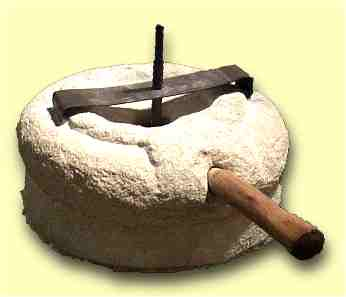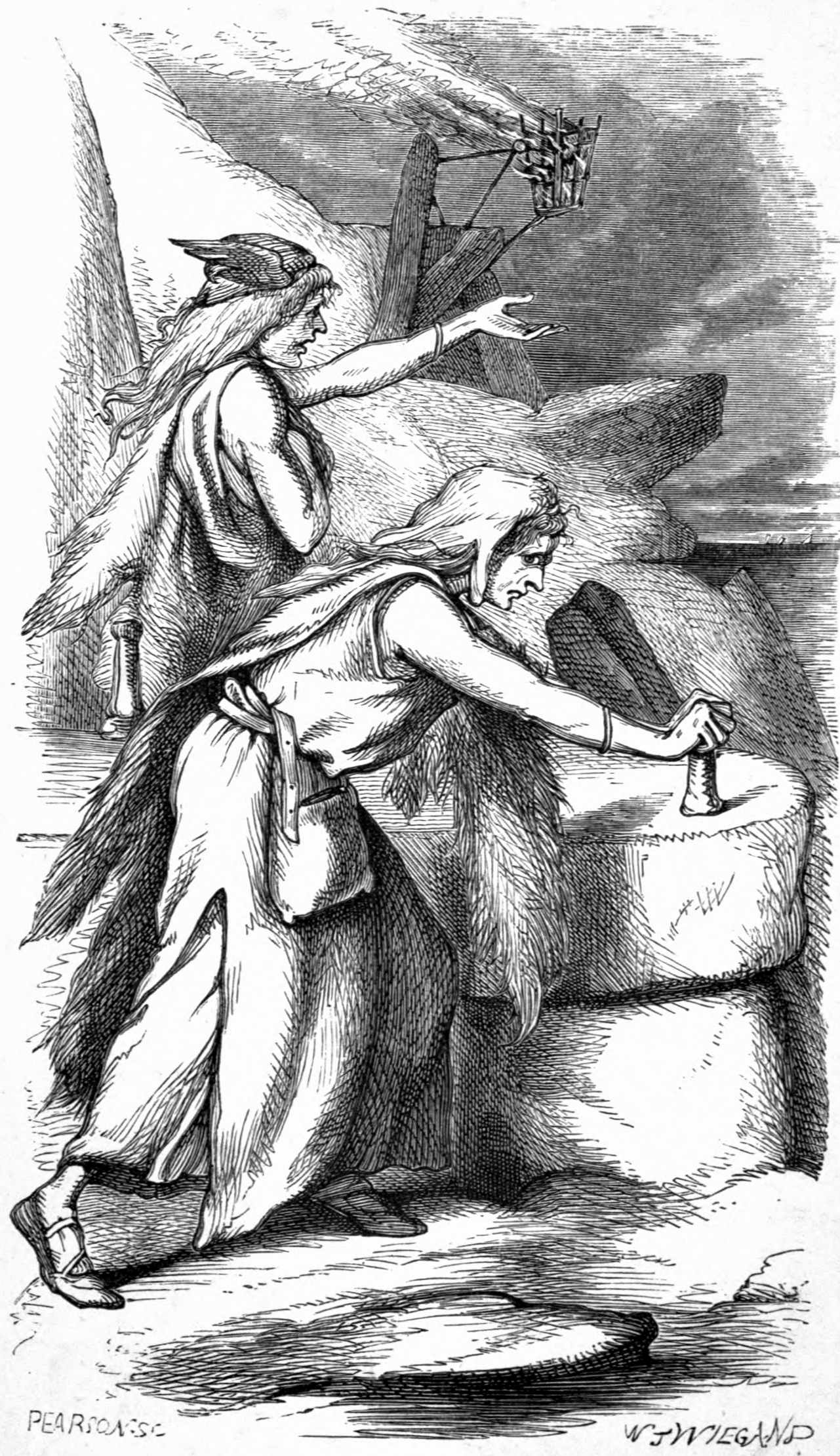The tripartite division of many pages in the Voynich is only the tip of the iceberg in discovering indications of a north European world view. Indeed, nearly every page contains images that hark back to an ancient symbolism, as demonstrated below.
The the quern and the world tree or pole as metaphors for the cosmos
In north European symbology, the quern-like circle divided only on the top, is reflected in the Eurasian shamanic drum pattern that depicts the world tree. This is an ancient concept from which is derived Yggdrasil in Norse mythology and in Celtic mythology the Crann Bethadh. In Sami mythology, the tree is represented by the central pole of their dwelling or the stytto.
 |
Kalevala Mythology, Revised Edition
By Juha Pentikäinen
|
|
 |
| In various north European traditions, the quern is a metaphor for the world with the polar star its pivot or nail. |
 |
| World View in Finnish Mythology |


 |
| Berchta or Perchta, engraving by Karl Jauslin, 19th c. |
 |
| Engraving from Le immagini de i dei antichi (Images of the Ancient Gods) by Vincenzo Cartari, 1571 |

More on the Quern
| Eldar Heide gave a paper titled "Finno-Ugric and Scandinavian notions about the world axis and the cosmic quern" on 5 April 2013 at the third meeting of the Austmarr Network, Härnösand. |
It is well known that Finno-Ugric peoples, like people further east, had a notion that the polar star was a nail in the top of an invisible world pillar. It is also known that among the Baltic Finns, the mythic object Sampo seems to have been this world pillar, but also the firmament (revolving around the polar star) understood as a gigantic mill, as well as a magic hand mill that grinded out prosperity for its human owner in mythic times.
Heide examines to what extent such notions were shared by the (Germanic) Scandinavian neighbours.
 |
| Gróttasöngr is the work song of two young slave girls bought in Sweden by the Danish King Frodi. The girls are brought to a magic grind stone to grind out wealth for the king and sing for his household. They finally grind and sing his demise. |
As the above image suggests, the
quern was a metaphor for fate, the wheel of fortune, the cyclic nature of time that made for the seasons, the motions of the cosmos, the way the world goes. As you can see, it was not simply a wheel but rather a circle with a handle, which represented a byway between the mundane and the sacred. This is the byway that becomes most easy to travel during the intercalary period of the year, when the veil between the material and the spiritual was believed to be thinnest. We can see in the imagery and text of the Voynich, in keeping with many folk traditions around the world, that the most important ceremonies were related to turning points in the annual cycle. like midsummer or autumn, as well as the traditional rites in people´s lives, such as childbirth.























No comments:
Post a Comment